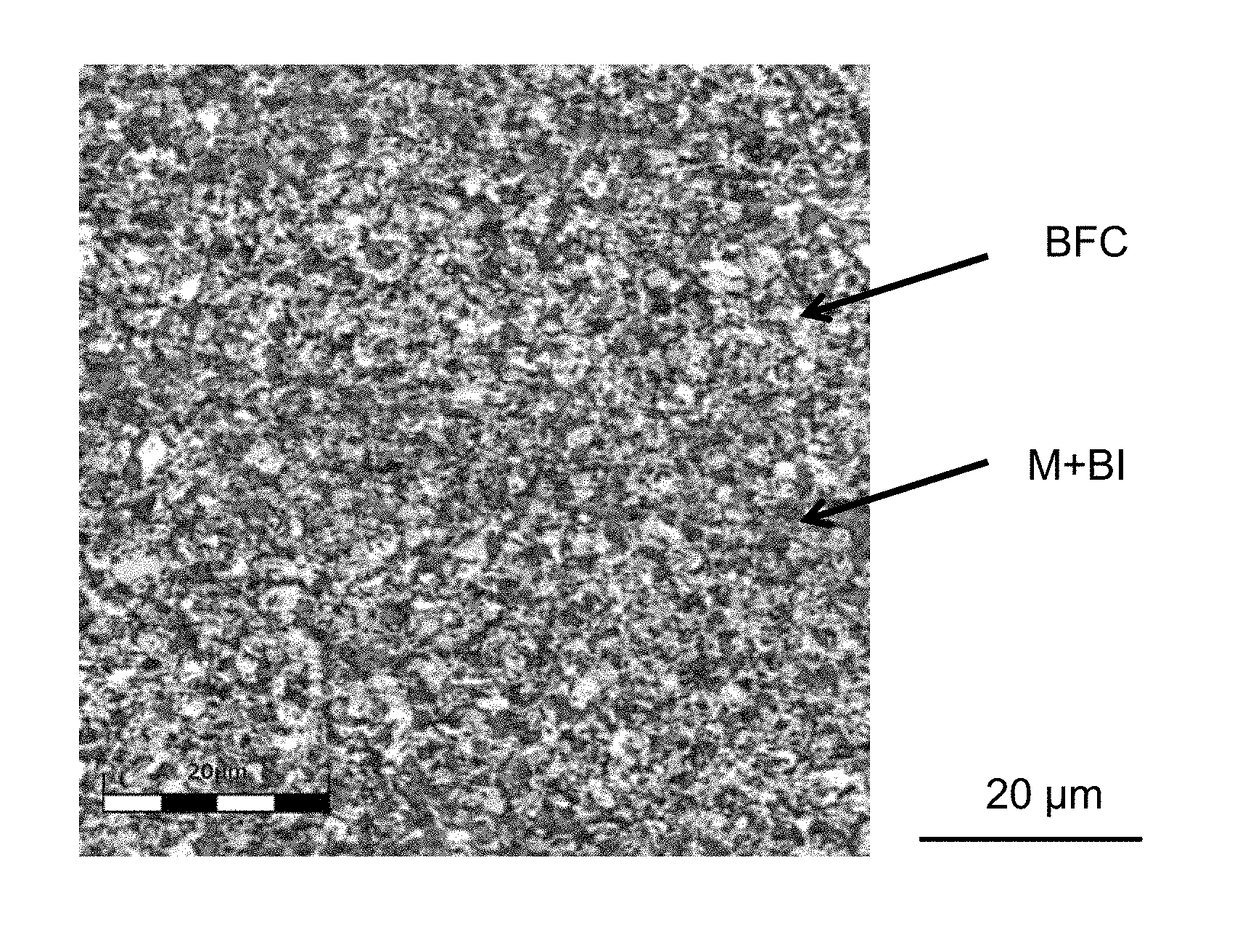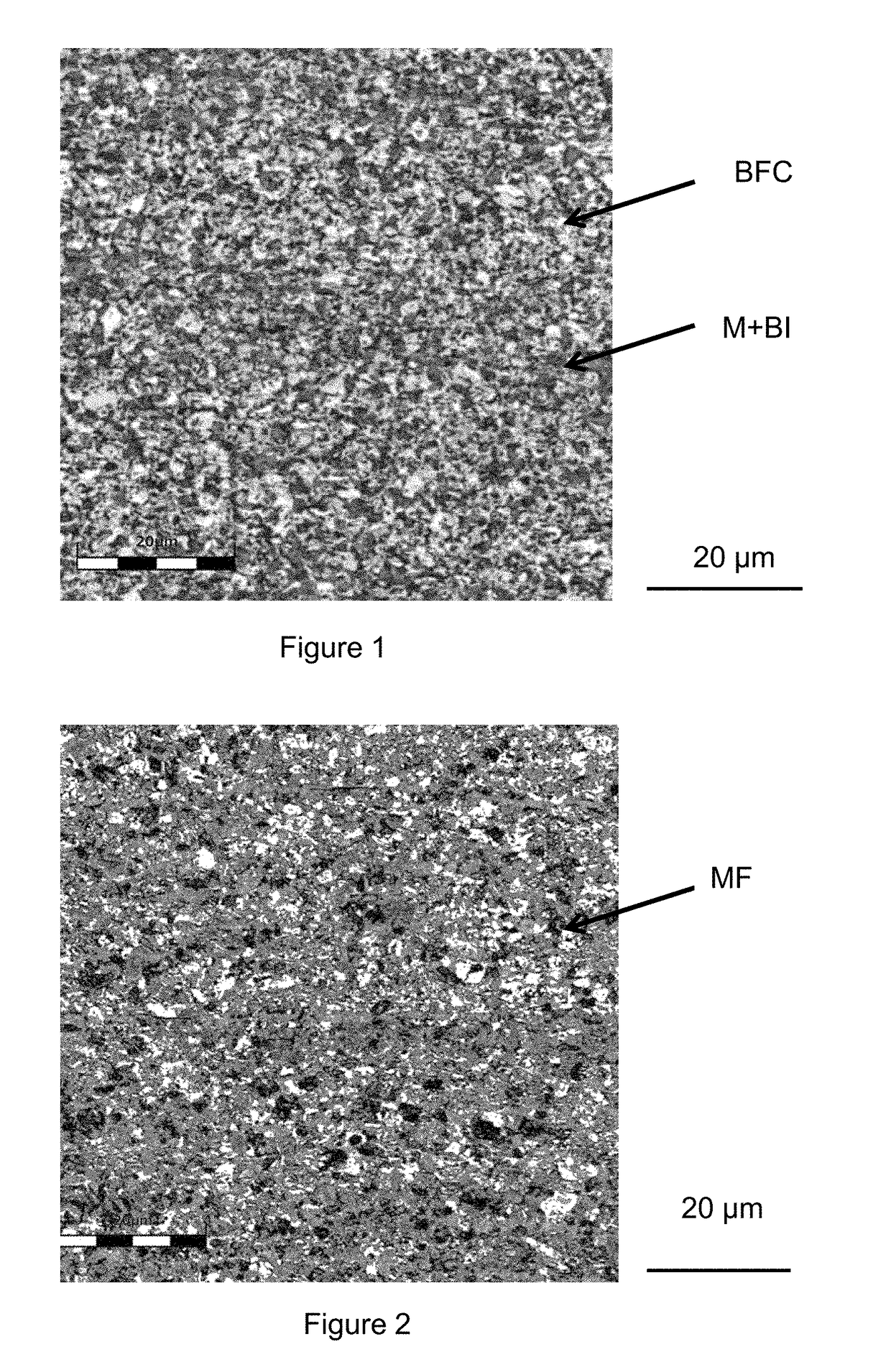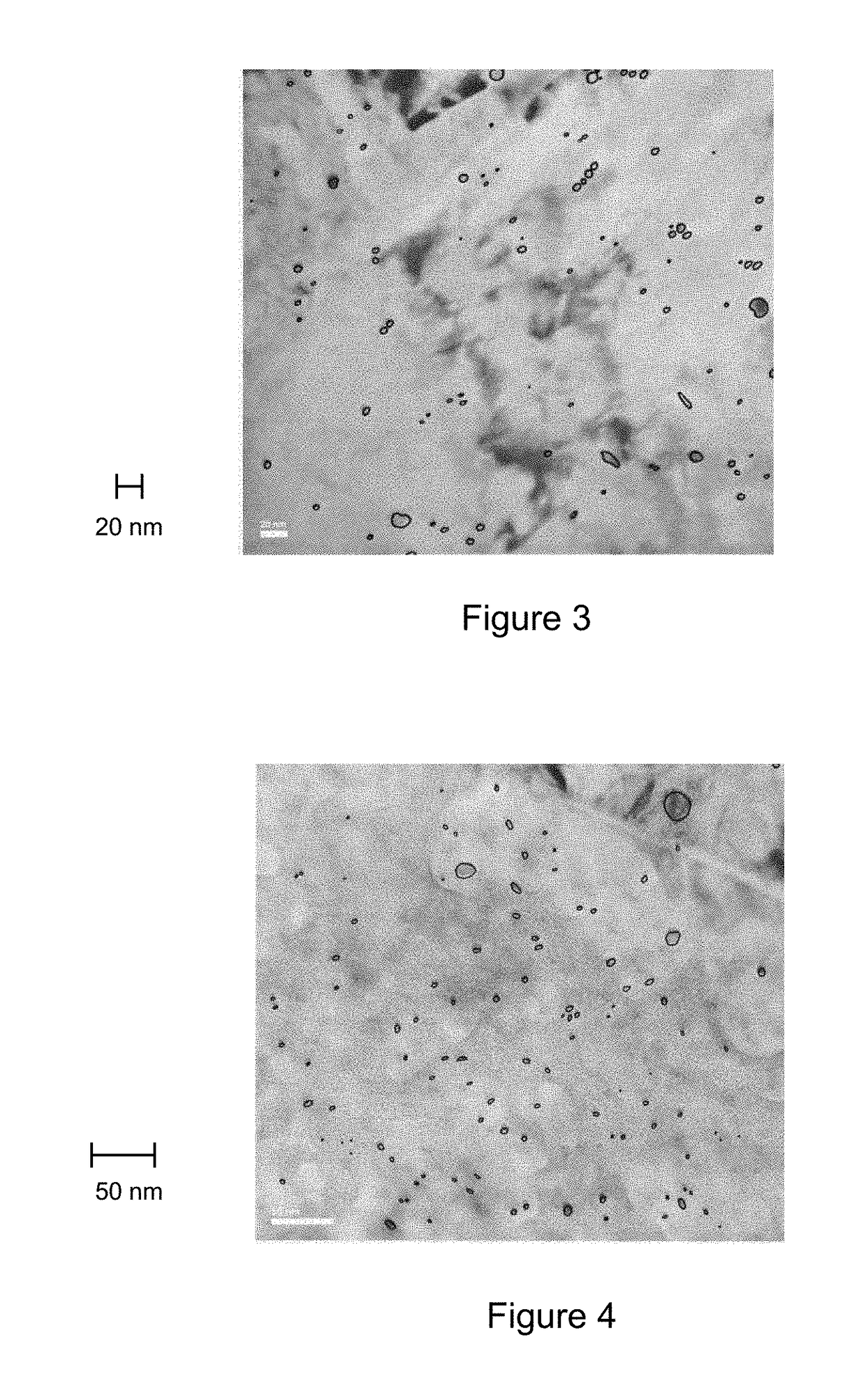High Strength Steel and Production Method
a production method and steel technology, applied in the field of high strength steel and production method, can solve the problems of reducing the thickness that still meets the same functional specifications, affecting the quality of steel products, and achieving strength at the expense of formability and weldability, etc., to achieve high mechanical strength, good formability, and high yield strength
- Summary
- Abstract
- Description
- Claims
- Application Information
AI Technical Summary
Benefits of technology
Problems solved by technology
Method used
Image
Examples
first embodiment
[0145] corresponding to manufacturing a continuously galvanized steel sheet, the sheet is coated by continuous immersion in a zinc or zinc alloy bath at a temperature TZn between 450° C. and 480° C. for a few seconds. Temperatures Te and TZn are such that 0° C.≤(Te−TZn)≤10° C.
[0146]The galvanized product is then cooled to room temperature while a large fraction of the remaining austenite is transformed to fresh martensite and / or lower bainite.
[0147]If a cold-rolled, annealed, and galvanized-alloyed (“galvannealed”) steel sheet is to be manufactured, the galvanized product is heated immediately after leaving the zinc or zinc alloy bath at a temperature TG between 490° C. / s and 550° C. for a period of time tG between 10 seconds and 40 seconds. This causes the diffusion of iron and the thin layer of zinc or zinc alloy deposited during the immersion process, resulting in a galvanized-alloyed sheet.
[0148]The galvanized-alloyed sheet is then cooled to room temperature while a large fracti...
second embodiment
[0149]In a second embodiment, corresponding to manufacturing an uncoated steel sheet, cooling of the sheet is carried out from temperature Te to the ambient temperature.
[0150]In a third embodiment, corresponding to manufacturing a steel sheet coated by a vacuum process, one proceeds as in the second embodiment, the sheet is cooled from temperature Te to room temperature, then a zinc or zinc alloy coating is achieved by vacuum deposition, e.g., by a physical vapor deposition (PVD) or a Jet Vapor Deposition (JVD).
[0151]In all the embodiments described above, a cold-rolled and annealed steel sheet containing in surface fraction 40% to 70% of the total amount of martensite and lower bainite, 15% to 45% low-carbide bainite, 5% to less than 20% ferrite and less than 5% residual austenite in the form of islands is obtained.
[0152]The inventors have demonstrated that the use of this method makes it possible to obtain a steel sheet with a mechanical strength between 1180 MPa and 1320 MPa, tog...
PUM
| Property | Measurement | Unit |
|---|---|---|
| Temperature | aaaaa | aaaaa |
| Temperature | aaaaa | aaaaa |
| Temperature | aaaaa | aaaaa |
Abstract
Description
Claims
Application Information
 Login to View More
Login to View More - R&D
- Intellectual Property
- Life Sciences
- Materials
- Tech Scout
- Unparalleled Data Quality
- Higher Quality Content
- 60% Fewer Hallucinations
Browse by: Latest US Patents, China's latest patents, Technical Efficacy Thesaurus, Application Domain, Technology Topic, Popular Technical Reports.
© 2025 PatSnap. All rights reserved.Legal|Privacy policy|Modern Slavery Act Transparency Statement|Sitemap|About US| Contact US: help@patsnap.com



